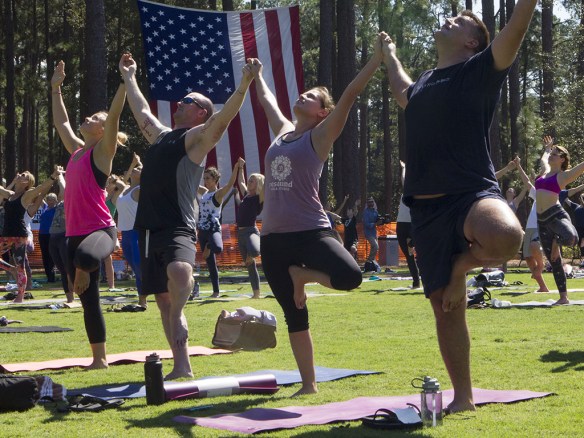This first appeared this summer on the Parks Project blog, a cool project run by my friend Keith Eshelman.
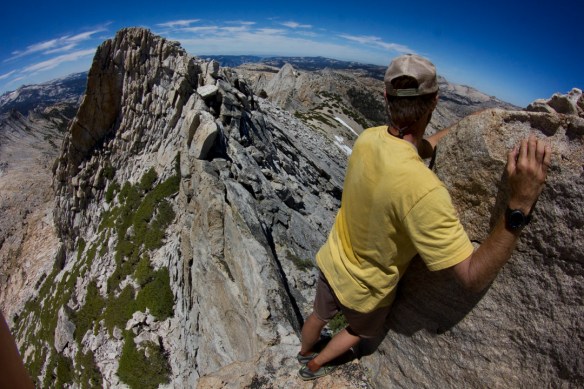
I got a call from my buddy Clarke and I had to go. He had a plumb line picked out in the high country, away from the heat and crowds of Yosemite Valley, and was looking for a climbing partner. We were headed for a route on Cathedral Peak, 700 feet of gleaming white granite topping out at 10,916 feet.
It felt liberating and expansive to leave our everyday routines and go to Yosemite, not only a National Park, but a UN World Heritage site, on a rarified list that includes the Walled City of Baku, Angkor Wat and the Galapagos Islands. Once you’re there, pack on your back, disappearing into the forest, there’s no doubt this place – a place to which John Muir said, “no temple made with hands can compare,” – belongs on that list.
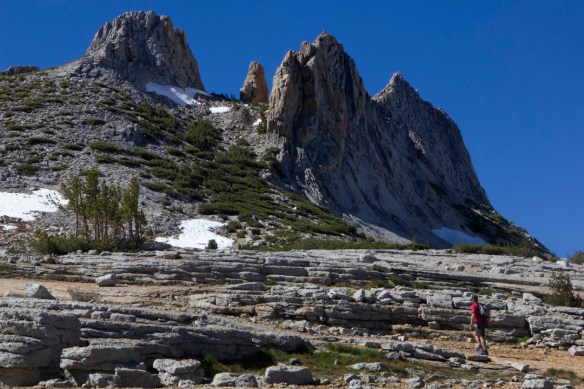
While driving past the liquor stores and freight cars of Mojave on the trip up, I wondered if it’s absurd to drive six-hours just to run up a trail as fast as we can, climb a huge rock, run back down, jump in the car and head home.
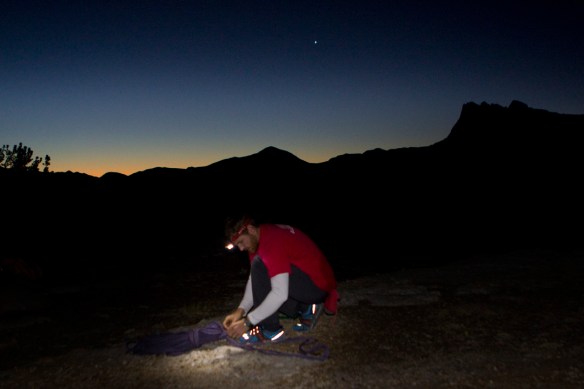
The immense granite faces of Yosemite were 25 million years in the making. The radical change of the landscape, though made invisible by its glacial pace, effects you here, slows you down. Environmental writer Kenneth Brower wrote of the Yosemite High Country, “Each visit there is a personal time travel, a return to the very beginnings of myself.” Once you’re living outside, sleeping on the ground, drinking snowmelt, the idea of blitzing up here for a just few days feels almost insolent in some way, if nothing else, to our selves.

As I got my hands on the coarse white granite, I focused on the climbing. Each footstep became a unique event in itself. Instead of wondering whether it’s absurd that we do this, I thought it was absurd that we don’t do this more.
Walking in the shadows of big peaks, still below tree line, you only get glimpses of granite walls that go up, up, up. You feel tiny. Once on the summit, you can see like an equal among towering peers. The high mountains and ridges stand out in succession, growing hazy toward the horizon, and now you realize the extent of Yosemite. It covers 760,000 acres. The Valley, with swarms around Camp Curry and Half Dome, is a tiny part of the park; most of Yosemite is backcountry, this austere, harder to access area that remains similar to when the Miwok lived here. I can imagine the endless magical places – streams and cliffs and coves and waterfalls that no trails lead to, and no one ever visits.
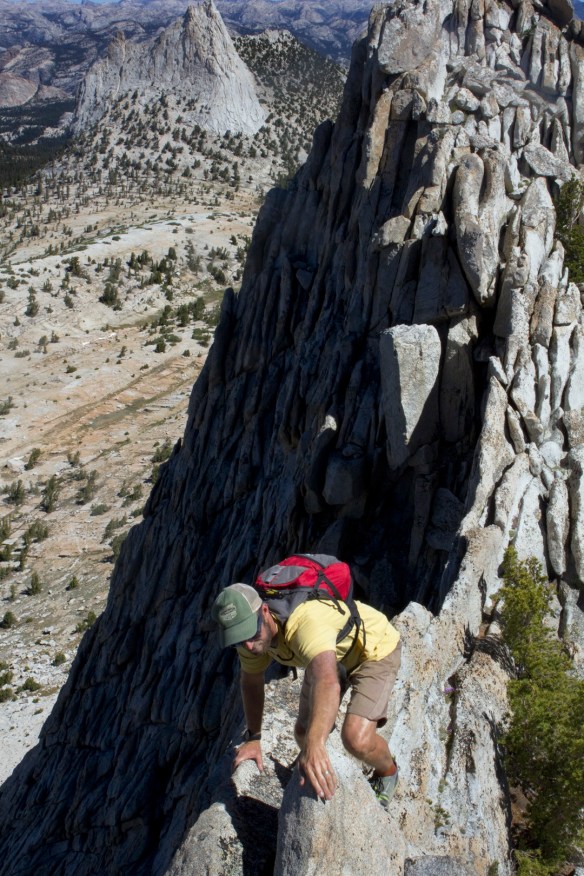
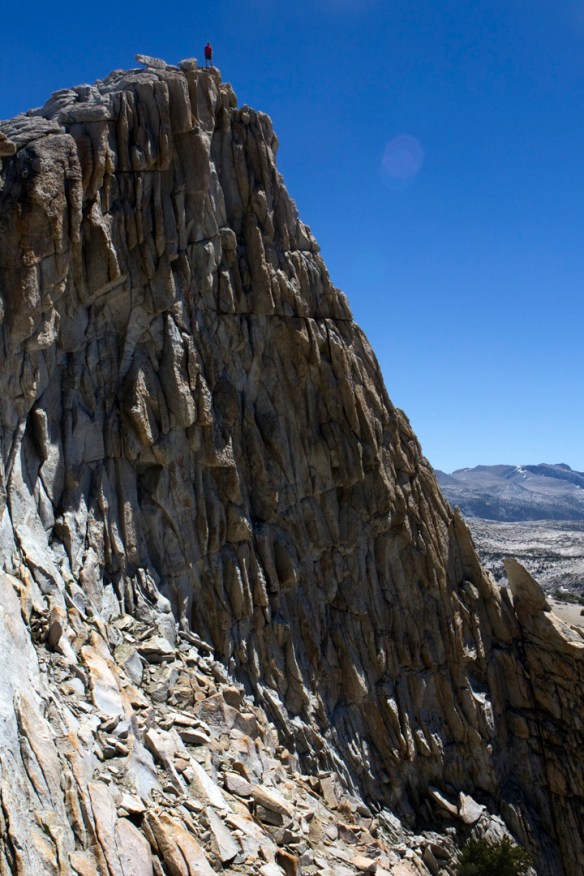
Four million people come to Yosemite every year. Our impact on wild places can be huge, or it can be small, depending on how we act. National Parks and the people who take care of them are faced with budget cuts. Learning about minimum impact practices, and traveling in the backcountry with no trace gives as much of a sense of accomplishment as climbing a big route.
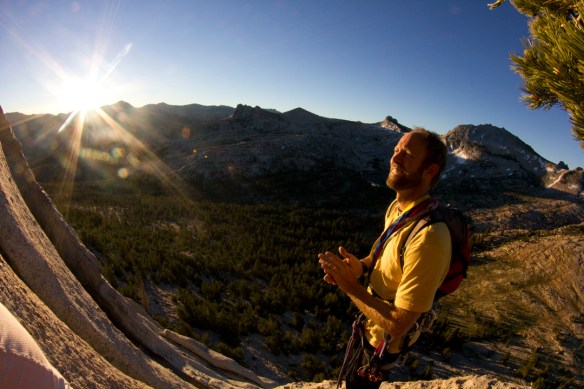
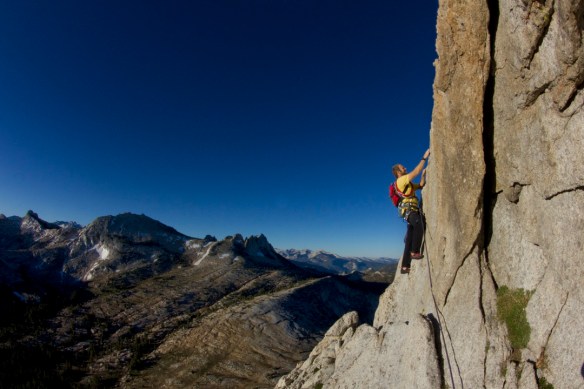
The climbing was only 5.6. Most experienced climbers would do it without a rope, but I’d been bodysurfing, gardening and hanging out with my two year old more than climbing, and decided to be a responsible dad. We did the Cathedral Traverse, which connects Cathedral Peak to a ridgeline with several other summits. It was a big day and the route pushed Clarke and I hard, which is what we wanted – a little penance for our absence. At the end we jumped in a lake, the best part of a day of climbing. The dirt and sweat and heat comes off and you feel cleansed beyond the physical. Your knees are iced, your feet cooled, your body tingles, your mind is quiet. You feel an uncommon, almost otherworldly peace, and it sticks around for a while. You’ve spent a little time in that part of life that lies out there like the rest of Yosemite, elevated and rarely traversed, and you resolve to come back more often before heading back down the trail toward the car.

